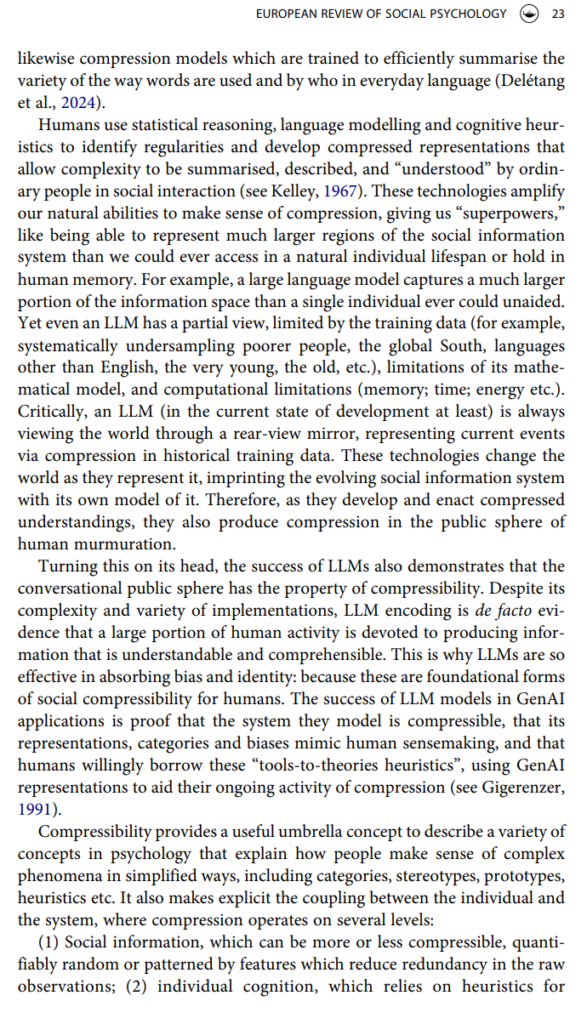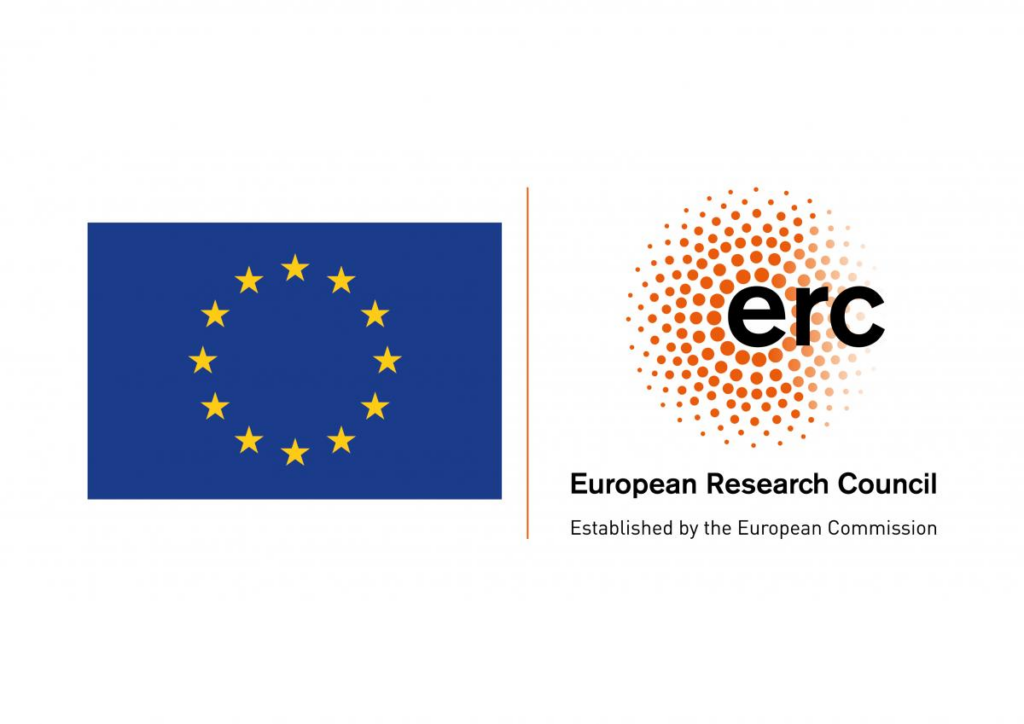
We are starting to build momentum on the ERC Identity Compression project, exploring how identity is “written in” to social information via social interaction; how this reduces complexity; and thus social information (like attitudes) become a substrate for identity. We’ll use ideas from information theory (compressibility; information entropy), simulations, network methods, and ordinary experiments. Like DAFINET, it will have an applied maths team working closely with a social science team to develop a novel take on social processes.
In this post I want to collate what we’ve written on the topic in two recent papers; more of an info-dump than a blog post, but perhaps useful for someone trying to figure out what we mean when we say “Identity Compression” or “compressibility.”
This is how we (Durrheim & Quayle, 2025, CC-BY-NC-ND 4.0) described the concept of compressibility in our recent Human Murmuration paper:





I also explain the idea in Social Identity Networks:
“To explain: if two contemporary Americans discover each other’s attitudes on abortion, immigration, gun control or other “hot” topics, they can guess each-other’s political identities with astonishing accuracy (Lüders, Carpentras, et al., 2024). On the other hand, if two Swiss people learn each-other’s attitudes to guns they will be better able to guess each-other’s gender than political identity.
How is this possible? It depends on the synchronization of attitudes in groups such that various combinations of attitudes become most associated with certain identities; thus identities become dimensions of compressibility in the collective social information system, and small amounts of information can be used to make reasonable guesses about other features by exploiting associational redundancy in the system (Durrheim & Quayle, 2025).
In this sense, social polarization is a feature of compressible social information that allows the recognition of an agent’s group identity from a small number of key attitudes, addressing the problem of how people use expressed attitudes to tell “us” from “them” in a system structured to facilitate this social operation. This is important because, once attitudes like “support for electric cars” or “approval of vaccines” become properties of groups, then attitude change becomes an intergroup process.”
(Quayle, 2025, CC-BY 4.0)
Of course, this concept is related to well-known approaches in political science (cleavages; contraint etc.) and psychology (stereotypes, heuristics, schemas etc.); but provides a mathematical umbrella concept that allows us to conceptualize humans-in-information as a dynamic co-constitutive system, and also allows us to imagine how social information is functional in the coordination of social activity.
I think this is one of those ideas that is both simple and obvious; but can really help us to conceptualize the relationship between individual experience and (dynamic) social structure.
References:
Durrheim, K., & Quayle, M. (2025). Human murmuration: Group polarisation as compression in interaction-language dynamics captured by large language models. European Review of Social Psychology, 1–40. https://doi.org/10.1080/10463283.2025.2499332
Quayle, M. (In Press). Social Identity Networks: People Holding Attitudes Are a Collective Social Identity Information System and Bipartite Networks Are a Useful way to Represent Them. European Review of Social Psychology. https://doi.org/10.1080/10463283.2025.2514433; Available at : https://michaelquayle.net/pubs/Quayle2025_Social-Identity-Networks_AcceptedVersion.pdf until DOI becomes active.

